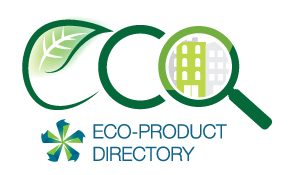|
|
| 2023-08-22 |
| 可持續解決方案觸手可及:瀏覽綠材目錄,邁向更綠色的未來 |
|
以 香港綠色建築議會 綠材目錄 為引領,踏上邁向更綠色建築環境的轉型之旅。現在,您只需點擊幾下,就能探索綠色環保產品的地理分佈。沉浸於真實可持續成功的視覺呈現中,獲取項目應用和性能的寶貴見解。 互動式地圖提供便捷的篩選選項,讓您專注於全球特定類型的產品和生態認證。這個令人興奮的功能增強了您的瀏覽體驗,促進了本地合作,並激勵了對環保材料的採用。 加入我們,共同推動本地合作和環保材料的採用。立即訪問我們的網站,探索附近可持續項目的積極影響。如需詳細使用指南,請點擊以下鏈接: https://epdir.hkgbc.org.hk/index.php?lang=en |
|
|
| 2013-07-17 |
| Revolutions in paints and coatings - GECA launched new paint standard |
|
The original GECA 23-2005 Architectural and Protective Coatings standard was replaced by GECA’s Paints and Coatings standard, in which the new only covers water based architectural paints (both interior and exterior), student and artists paints, and other water based coatings. According to GECA, statistics supported that organic solvents based paint will typically release higher content of volatile organic compounds (VOCs) into the surrounding environment. Solvent-based paint also contains around 50 per cent more embodied energy than water-based paint. Reference: GECA Website http://www.geca.org.au/products/standards/47/ |
|
|
| 2013-07-17 |
| EU looking into wider aspect of green building |
|
The European Commission is gathering views on how to reduce the environmental impacts of buildings. Buildings use a large amount of resources when they are designed, built, used and demolished, and their impact on the environment, energy consumption and climate change is significant. Improving construction techniques is therefore important to help Europe become a more sustainable economy. The environmental impacts of buildings go beyond energy consumption for heating, cooling and lighting. In the EU, buildings account for:
Contributors are asked for their views on the main environmental issues for the buildings sector, availability of data, systems to assess and communicate environmental performance of buildings, how to stimulate demand, and how construction materials could be used more efficiently. Reference: http://europa.eu/rapid/press-release_IP-13-666_en.htm |
|
|
| 2013-07-17 |
| People demanded more info about green product |
|
According to a survey conducted by the European Commission, people are changing their purchasing habits and buy more environmentally-friendly products, but many feel they lack information and distrust manufacturers' environmental claims. The survey on the "Attitudes of Europeans towards building the single market for green products" indicates that more than three-quarters of respondents are willing to pay more for environmentally-friendly products if they were confident that the products are truly environmentally-friendly (77%). However, only slightly more than half of EU citizens feel informed (55%) about the environmental impacts of the products they buy and use.
|



